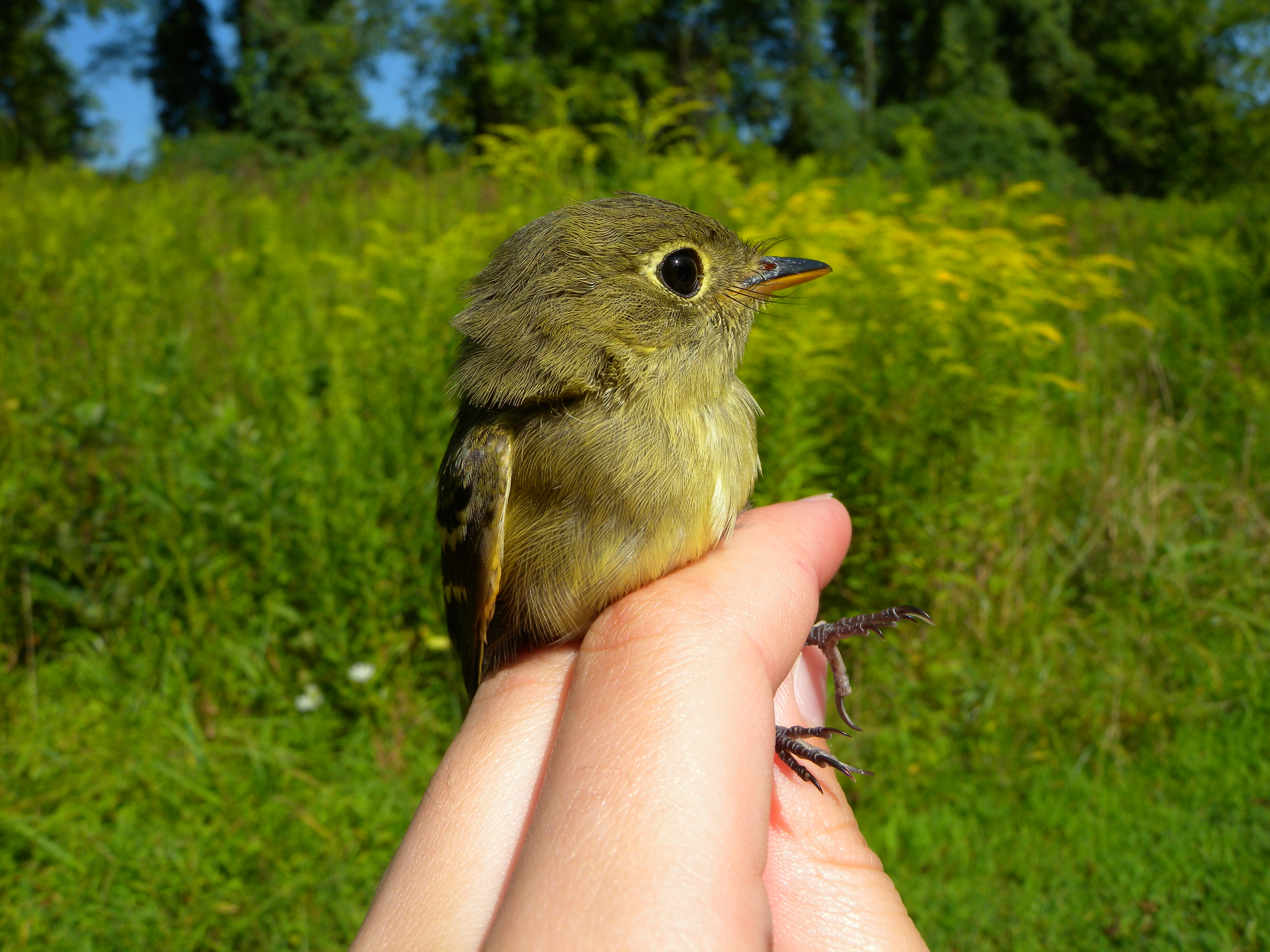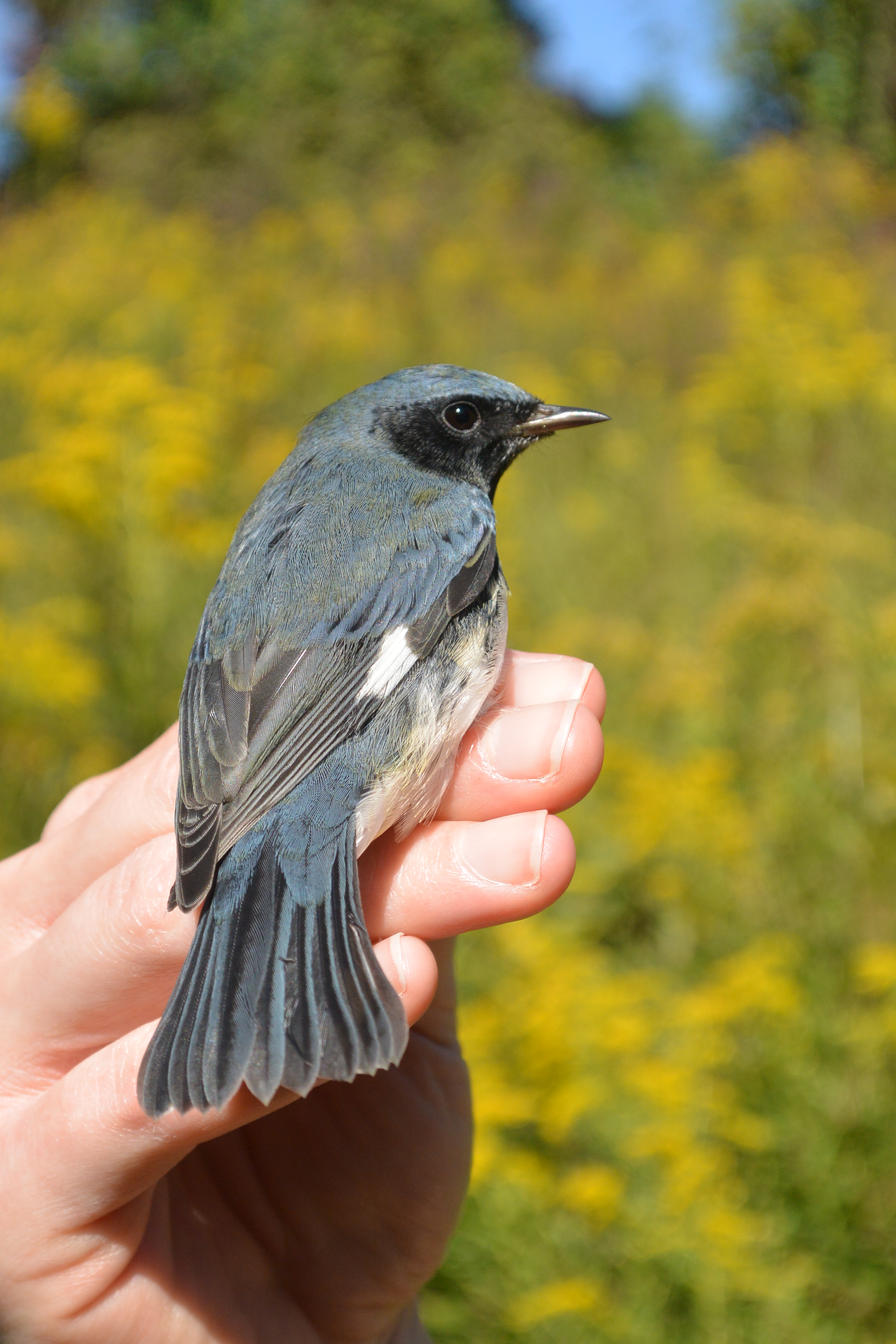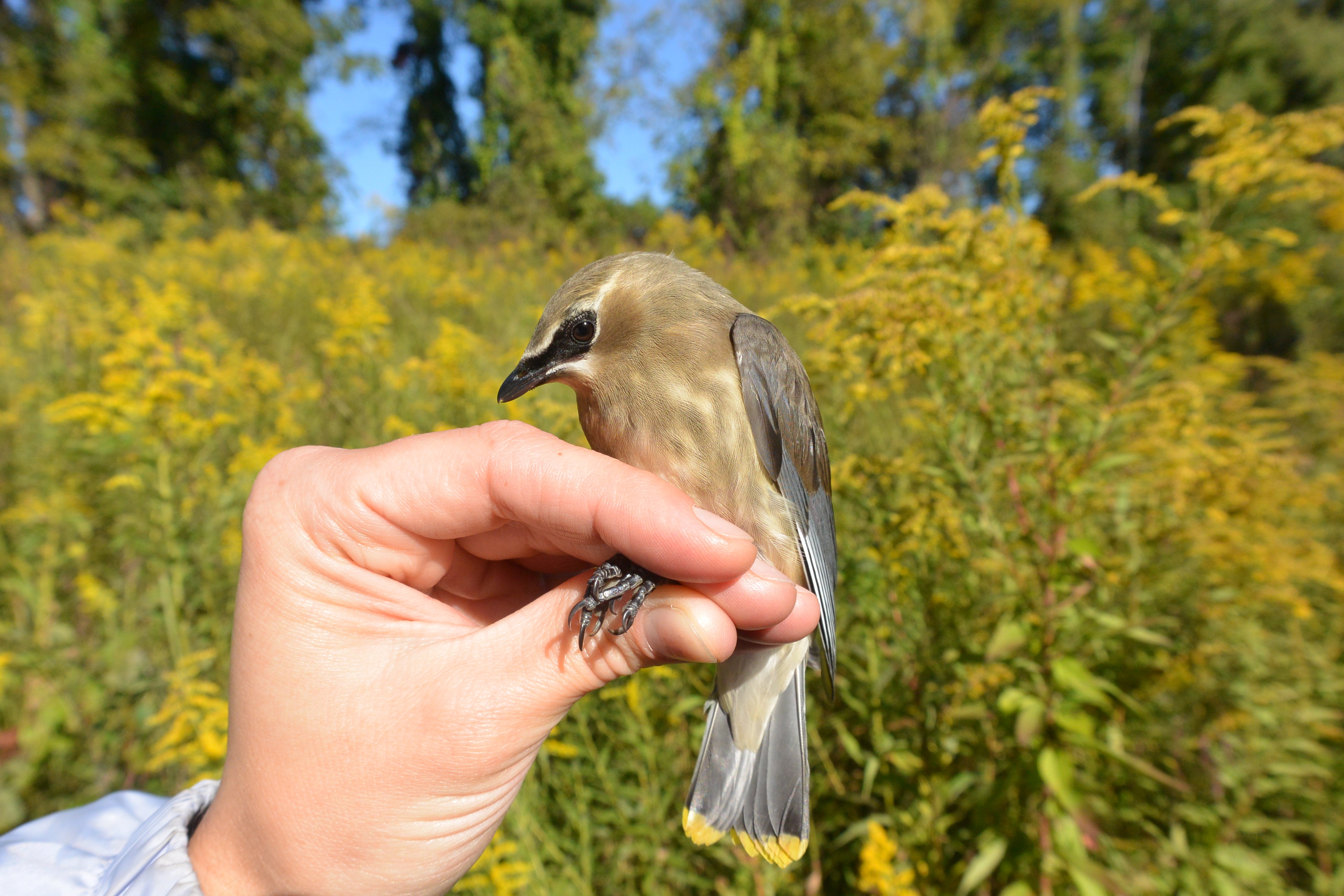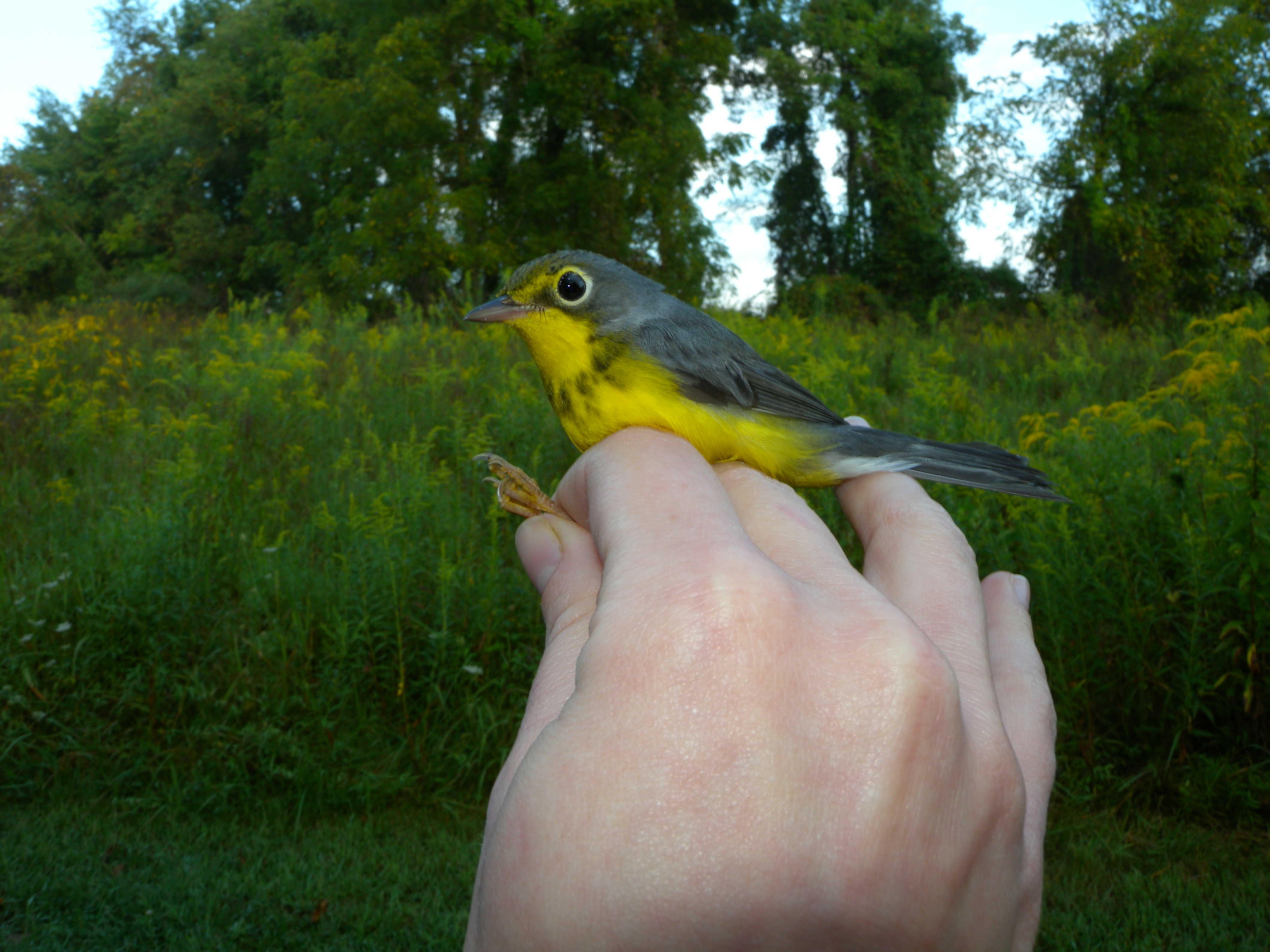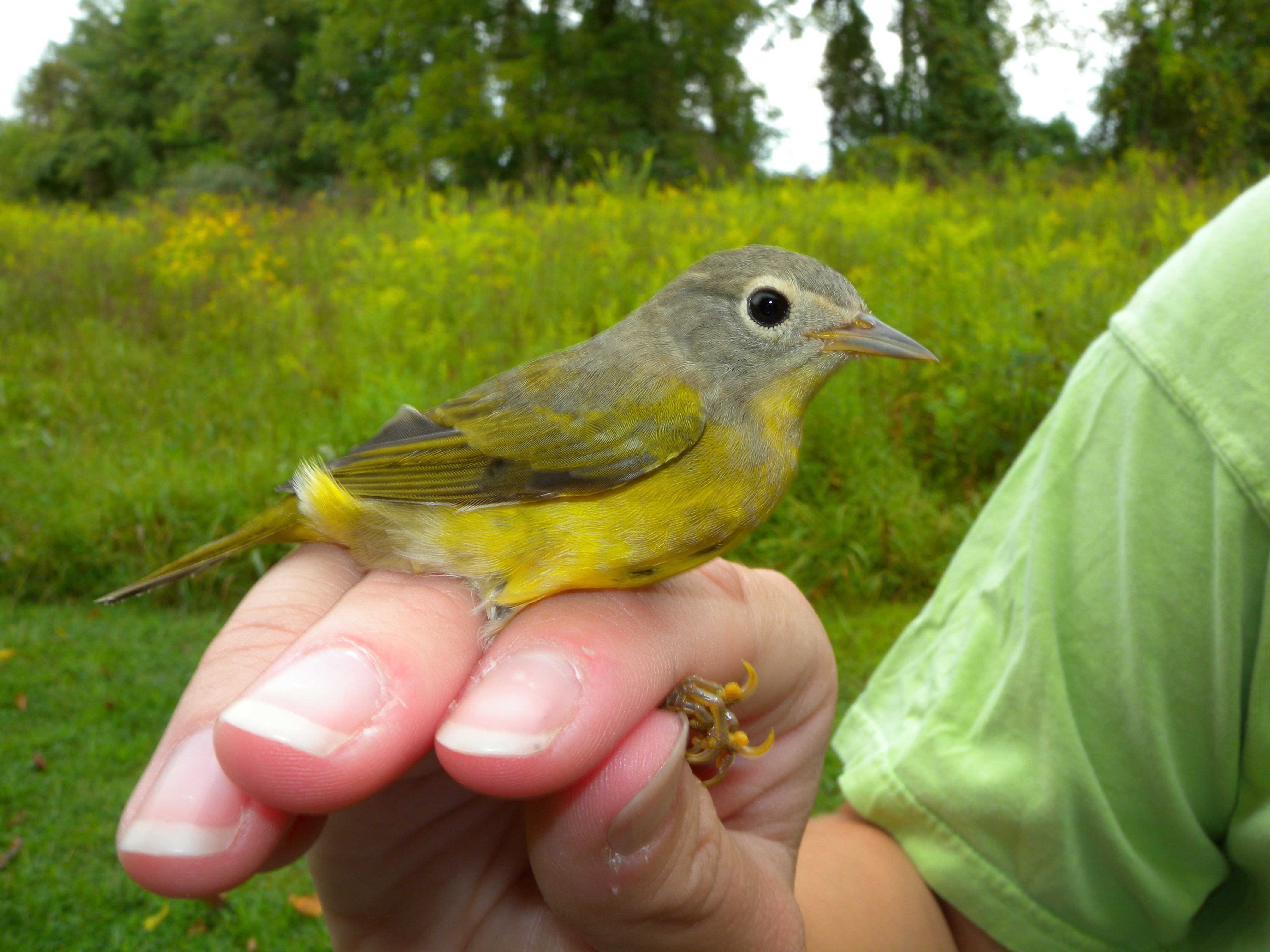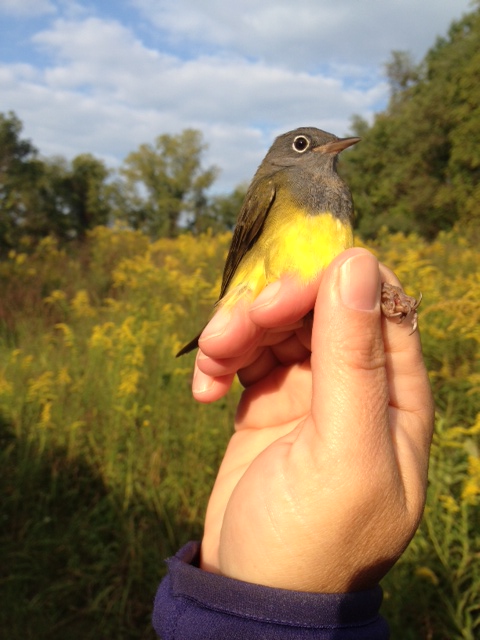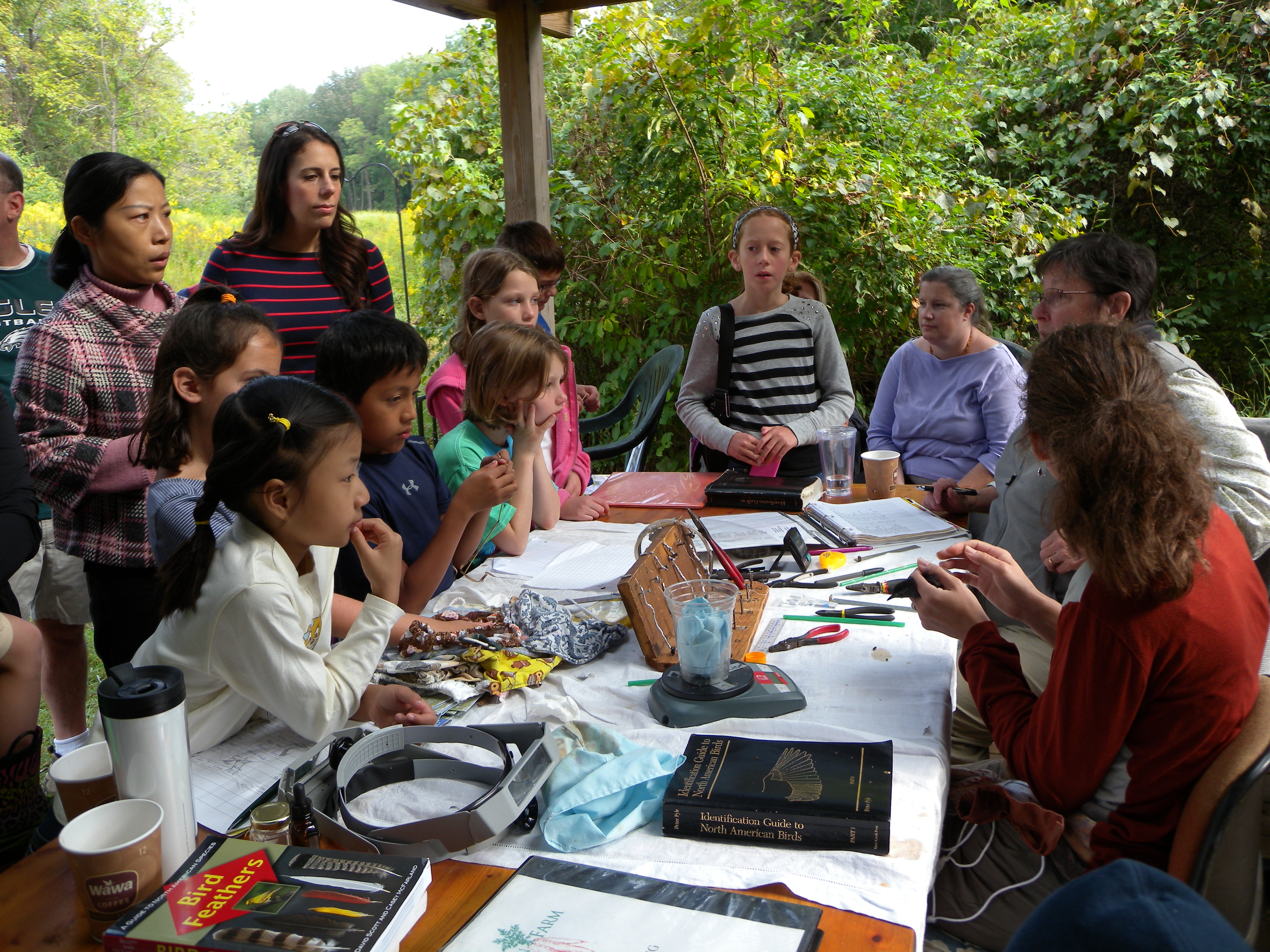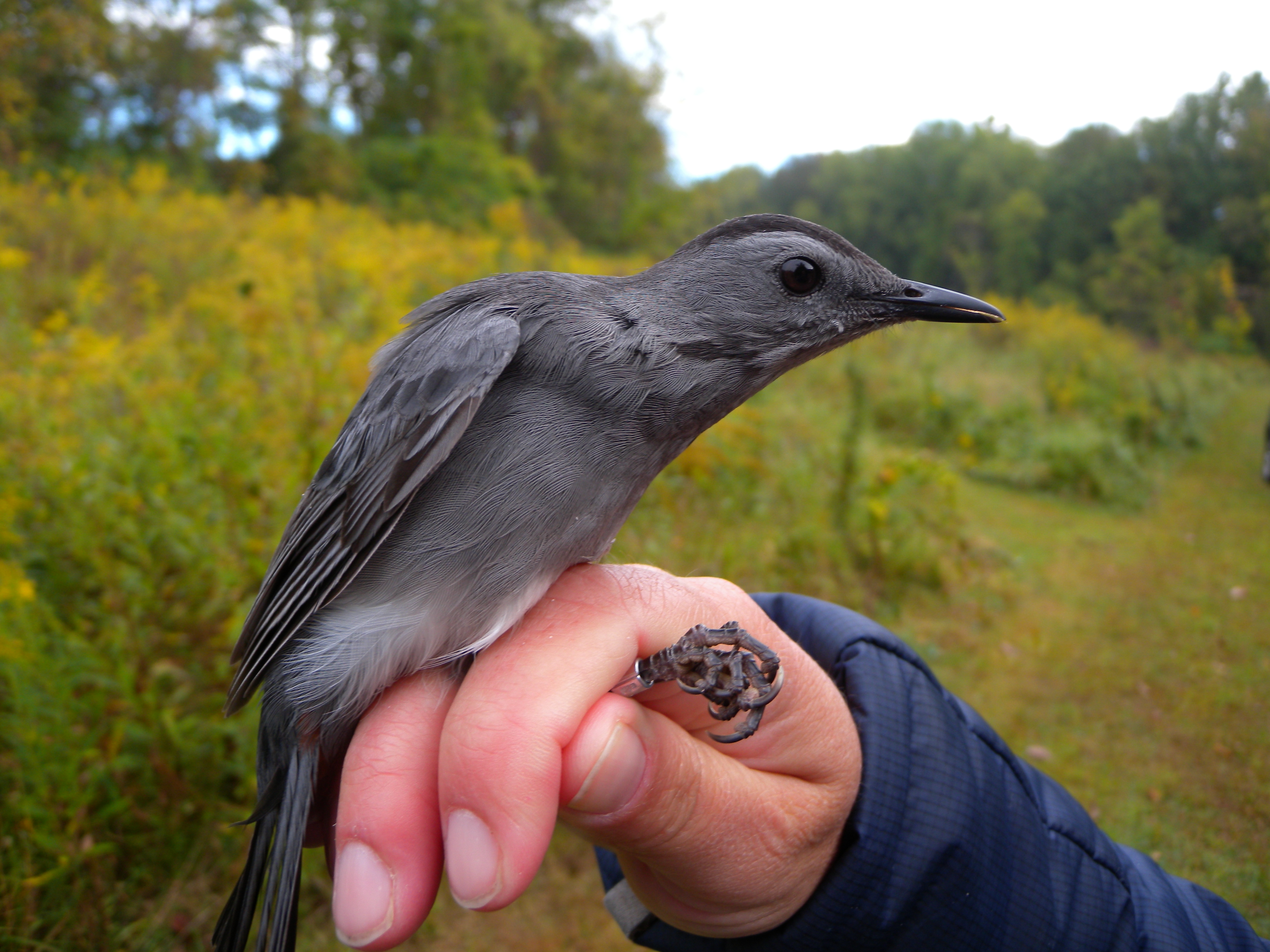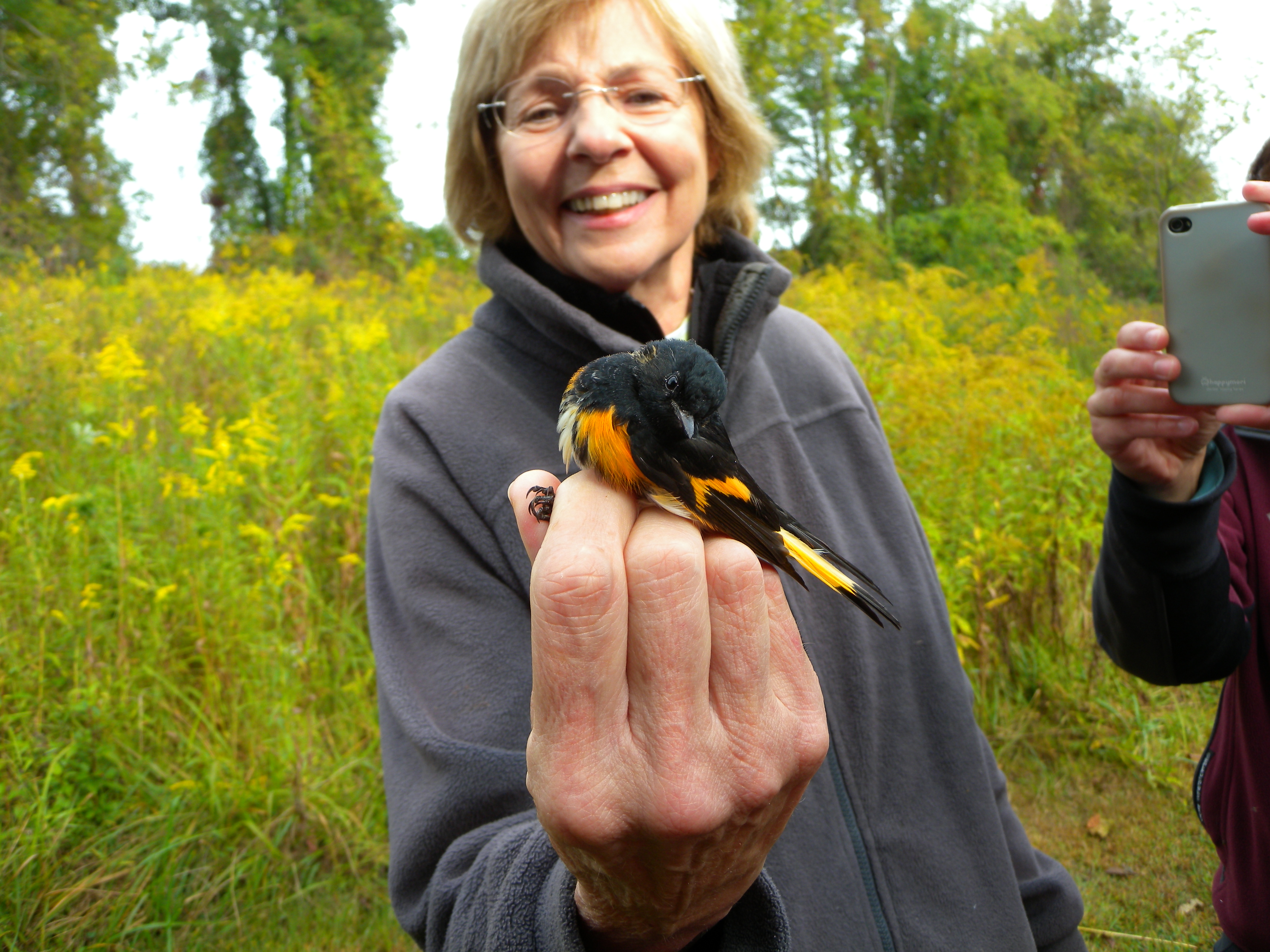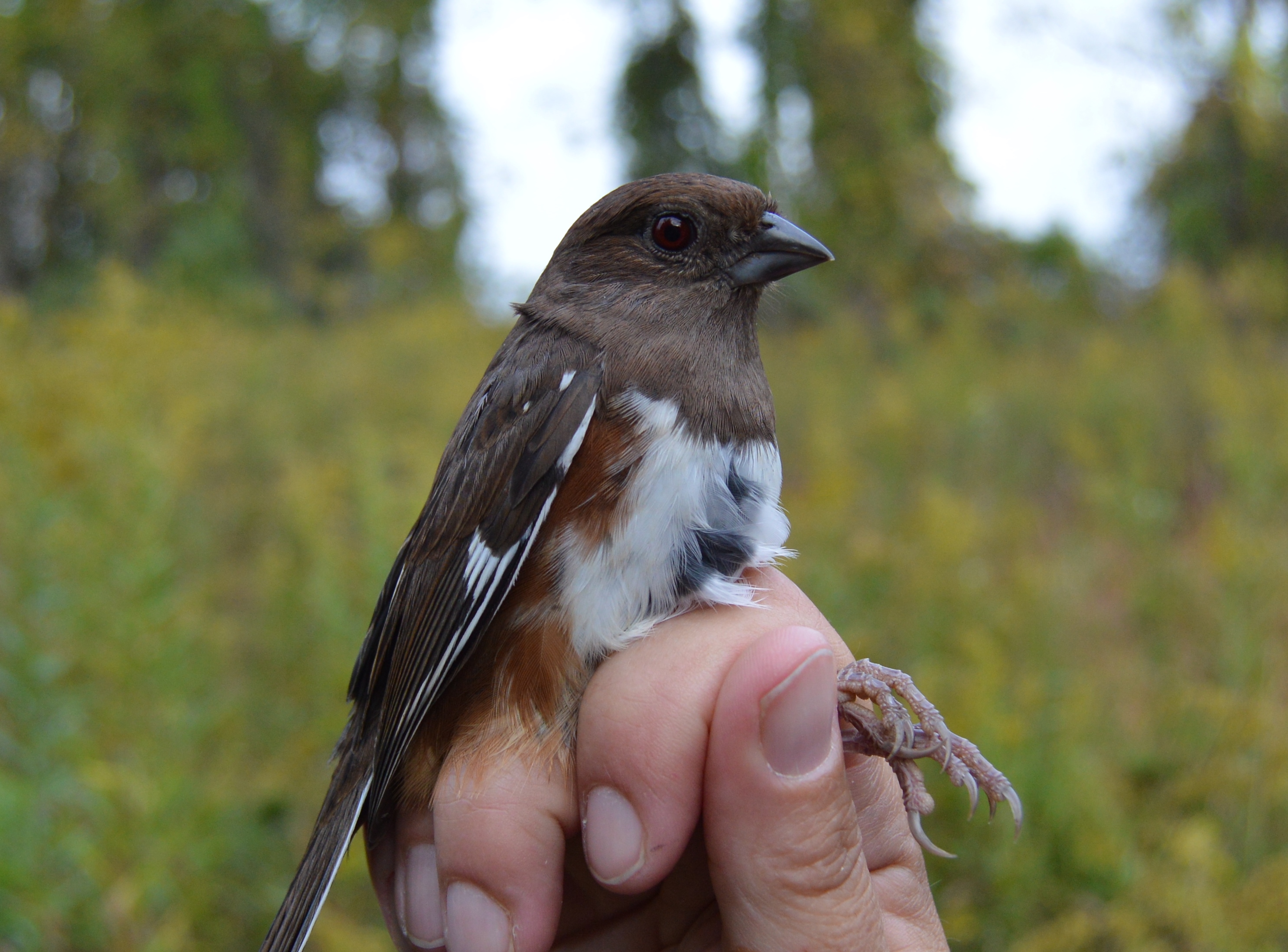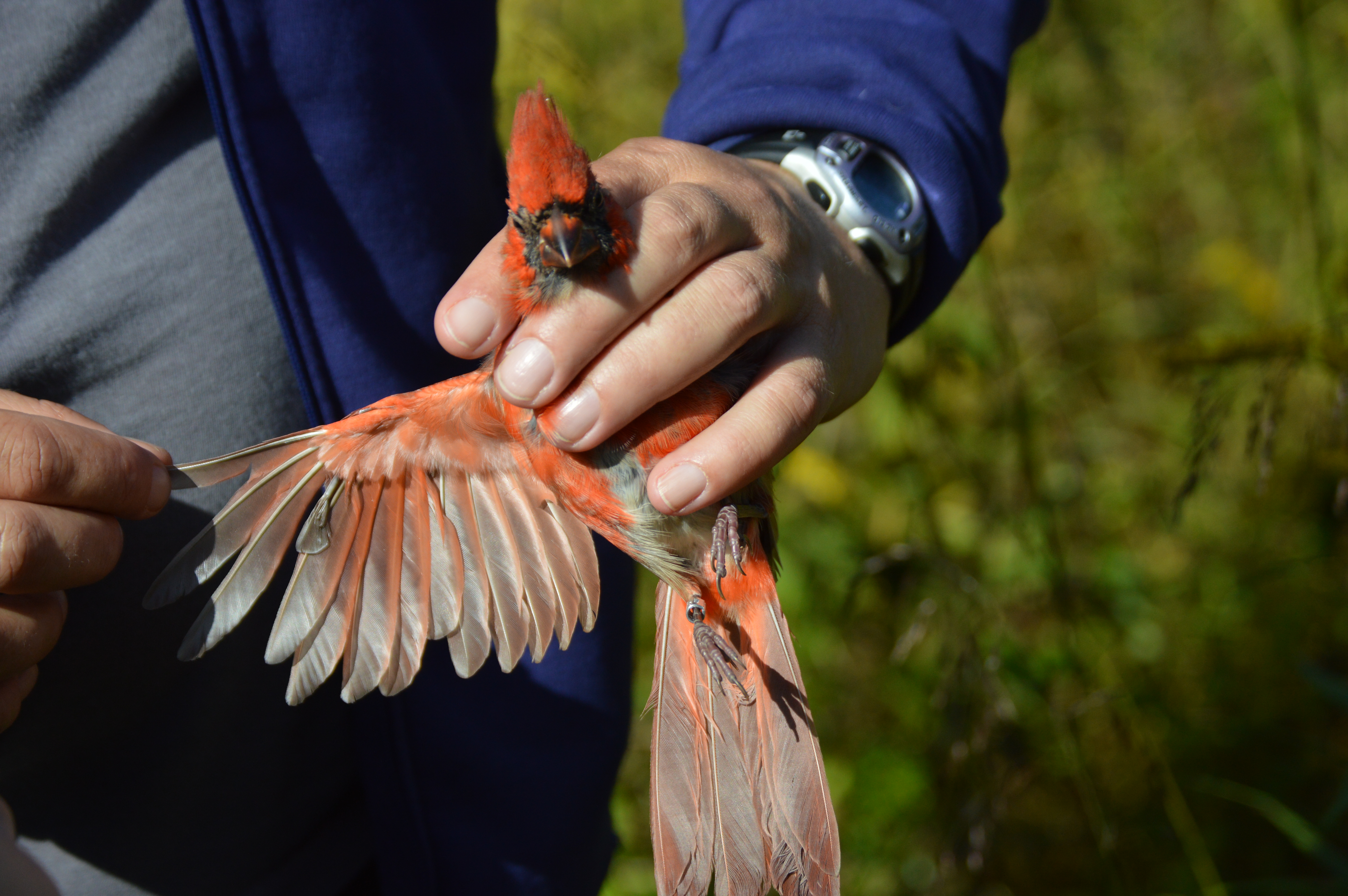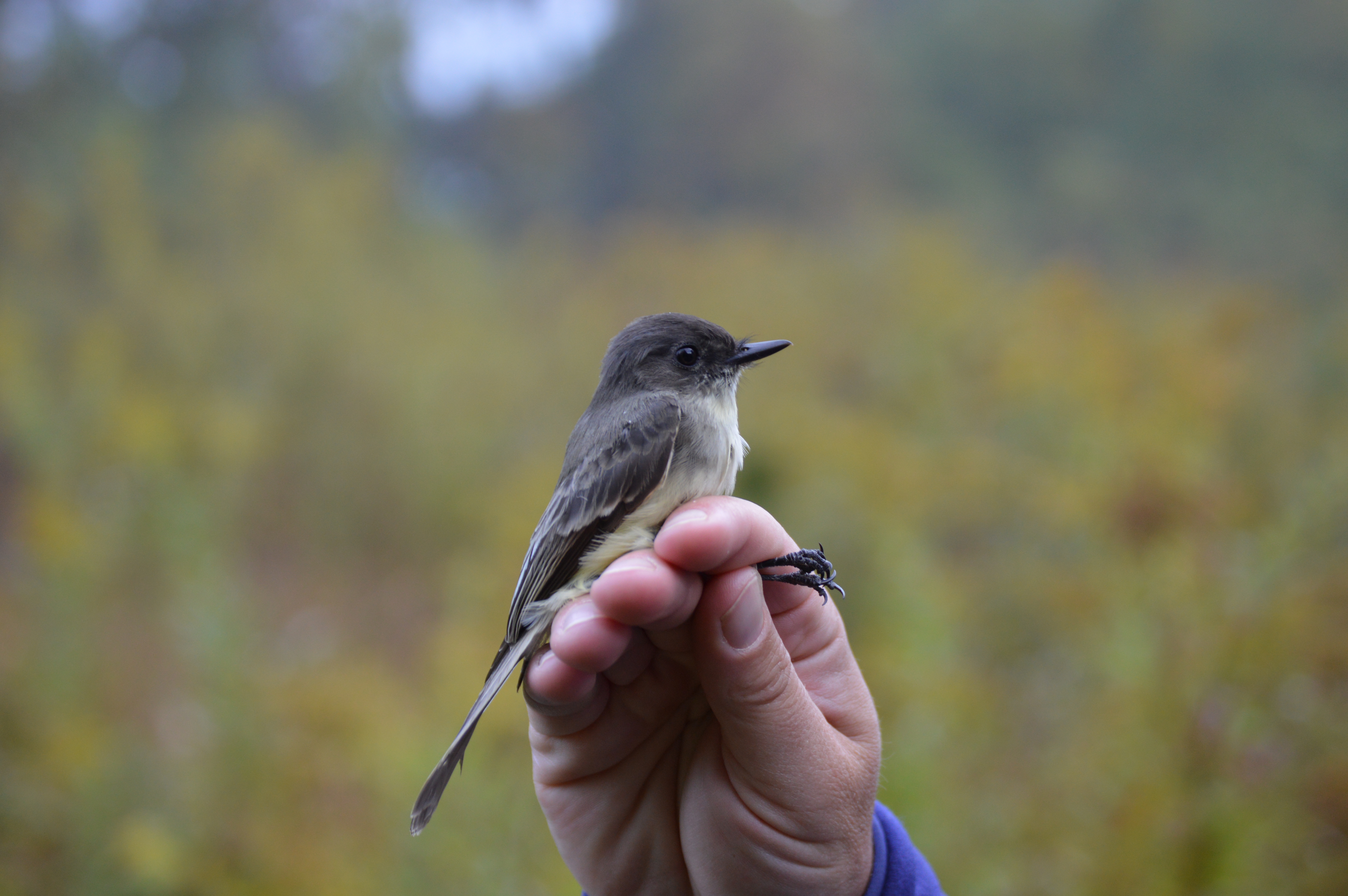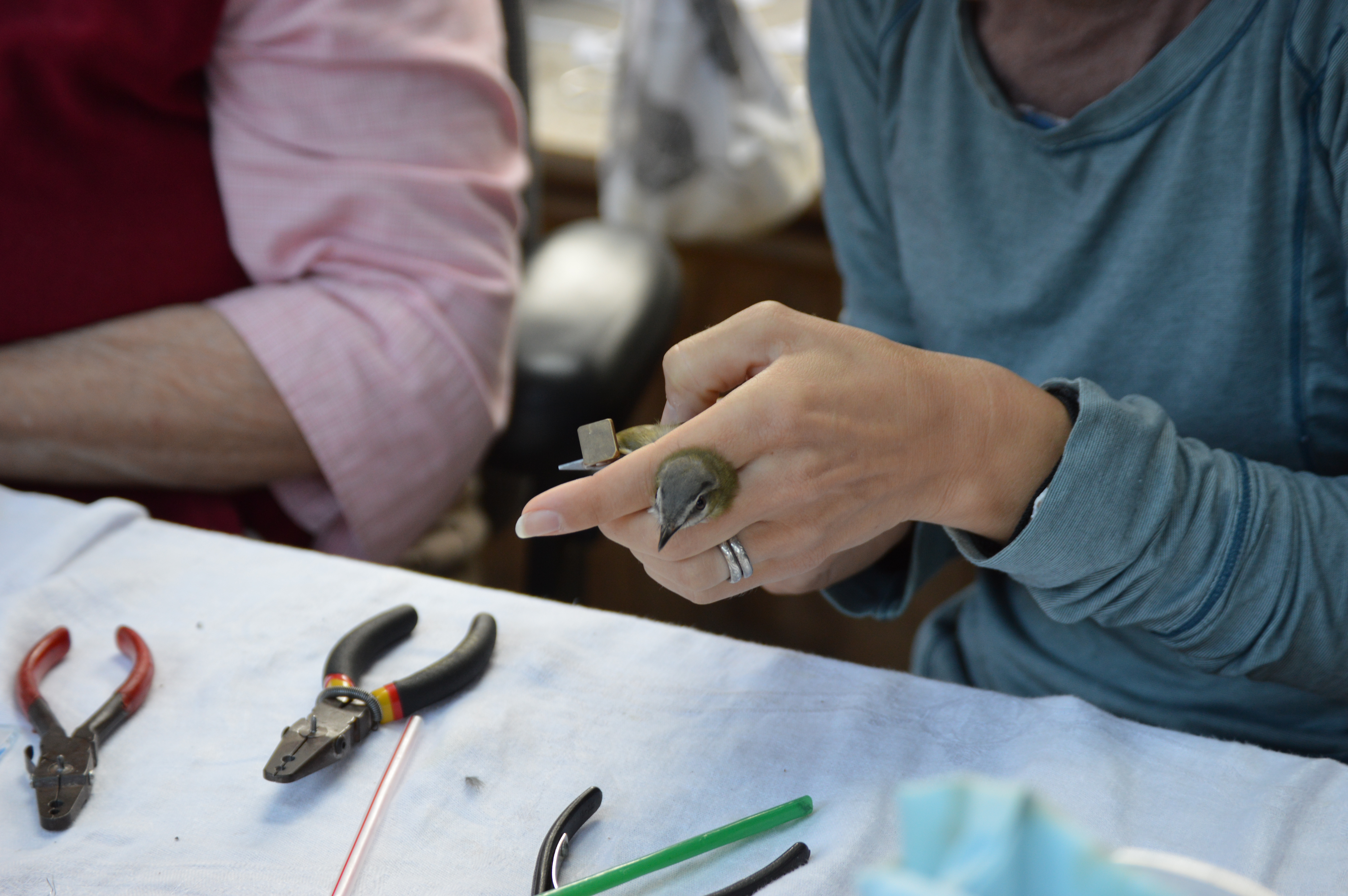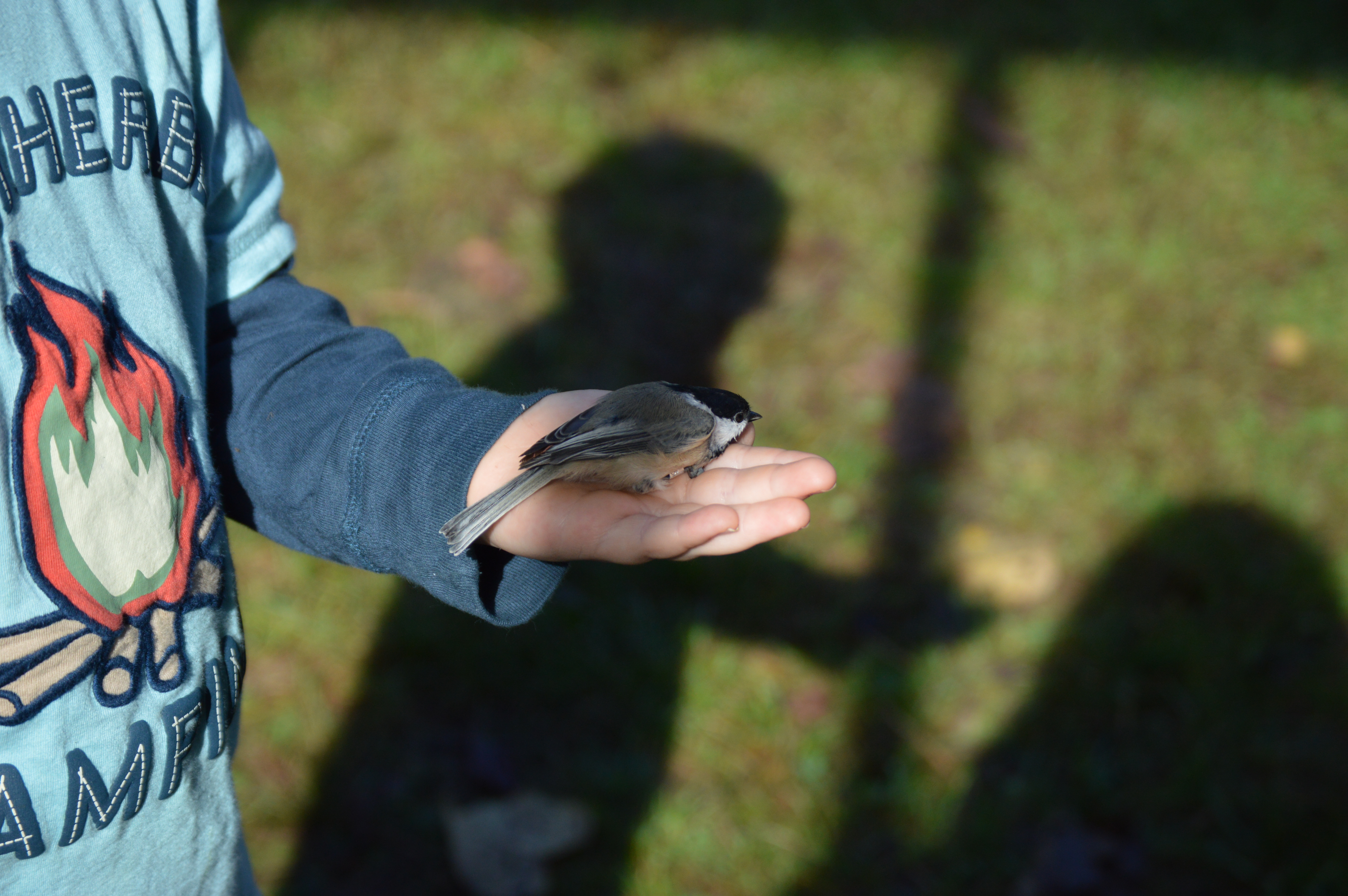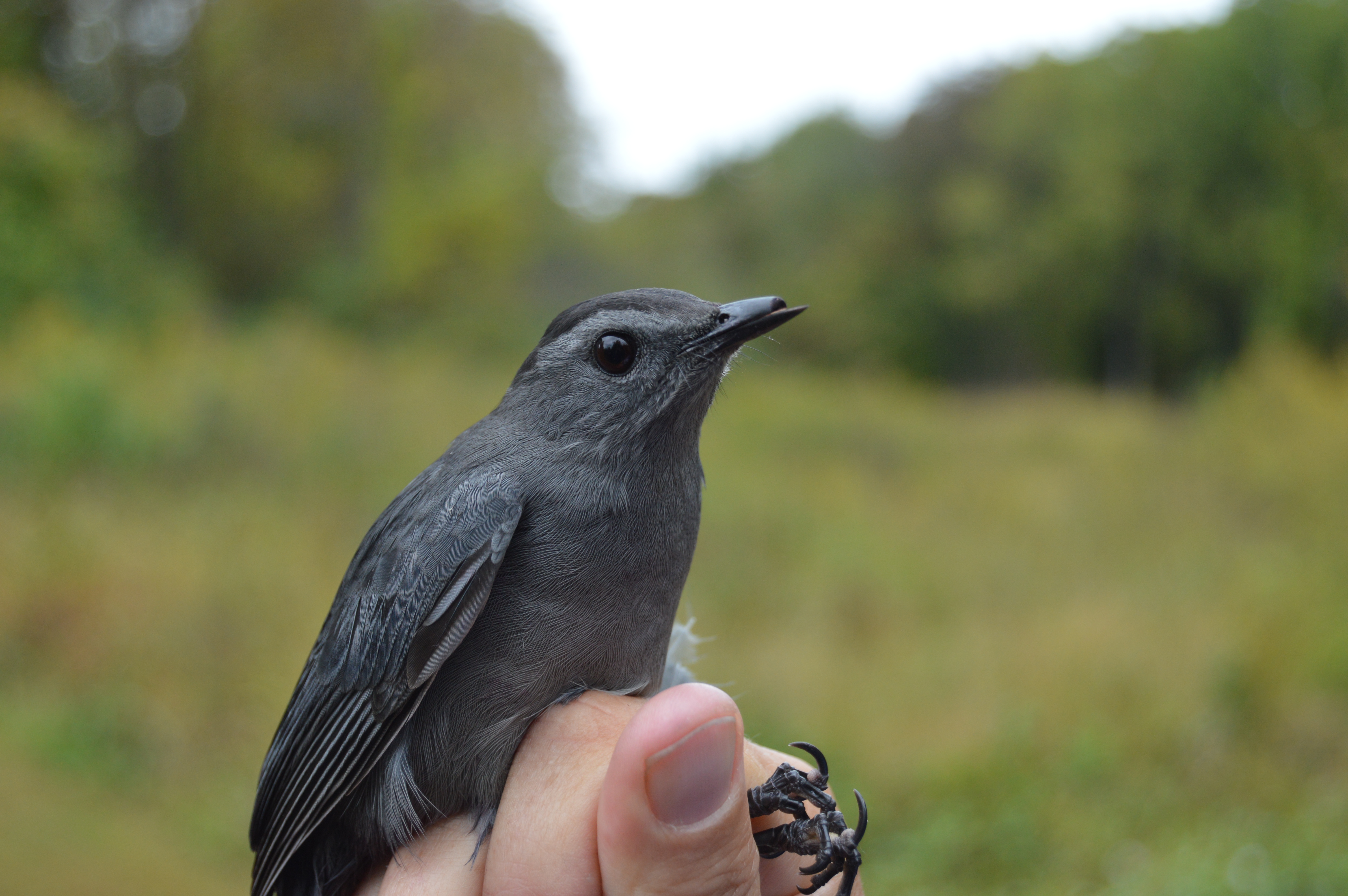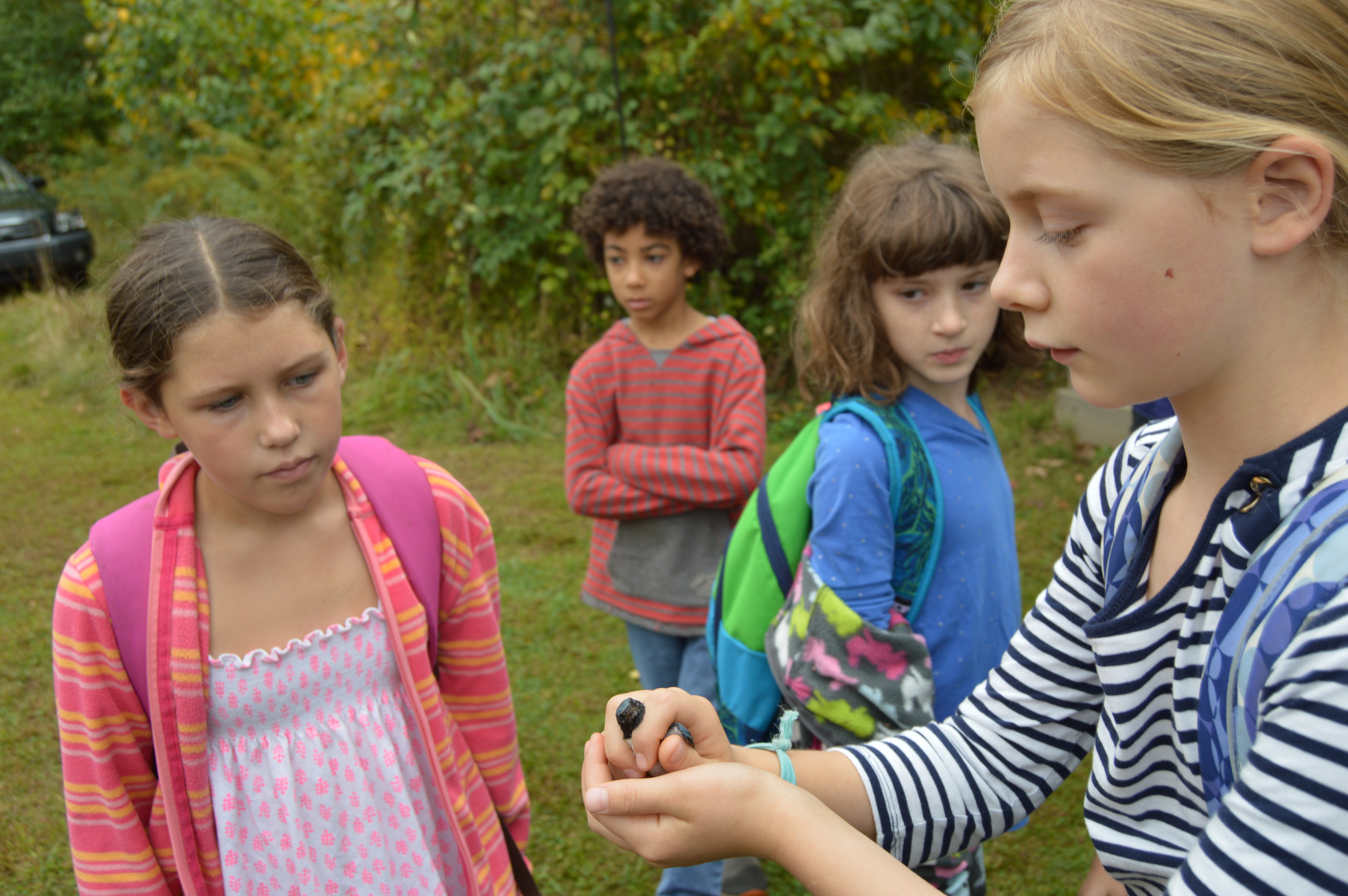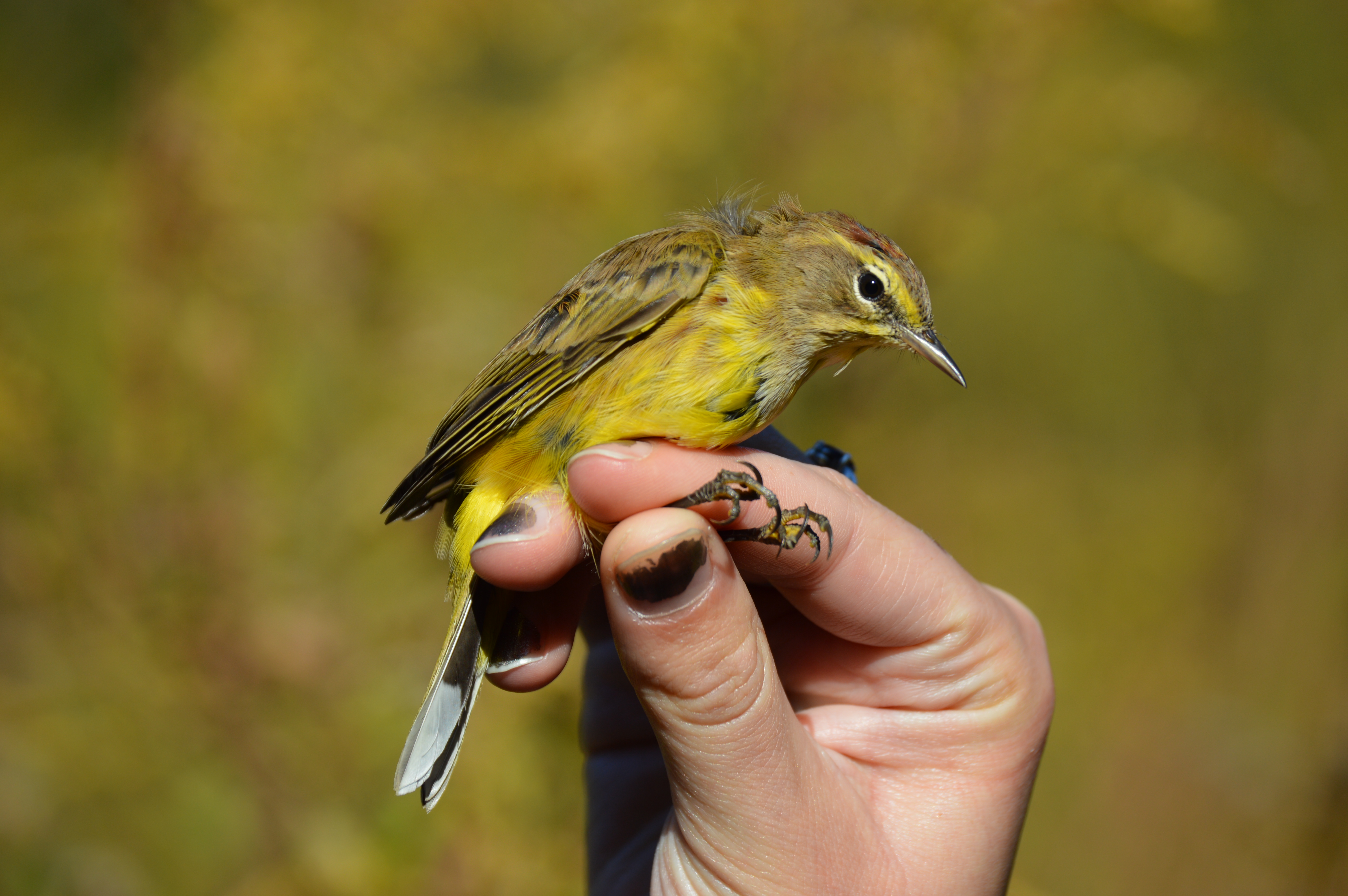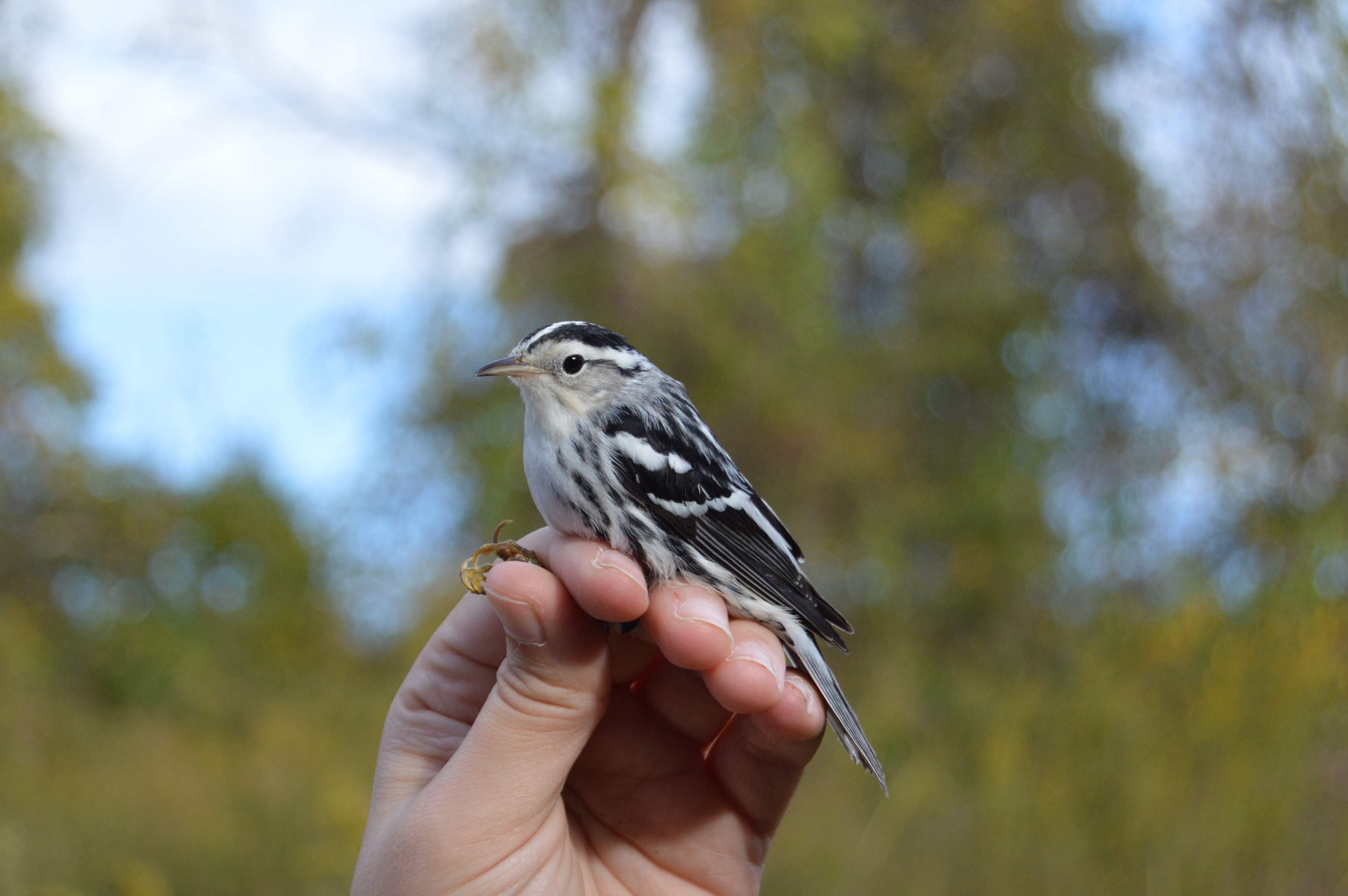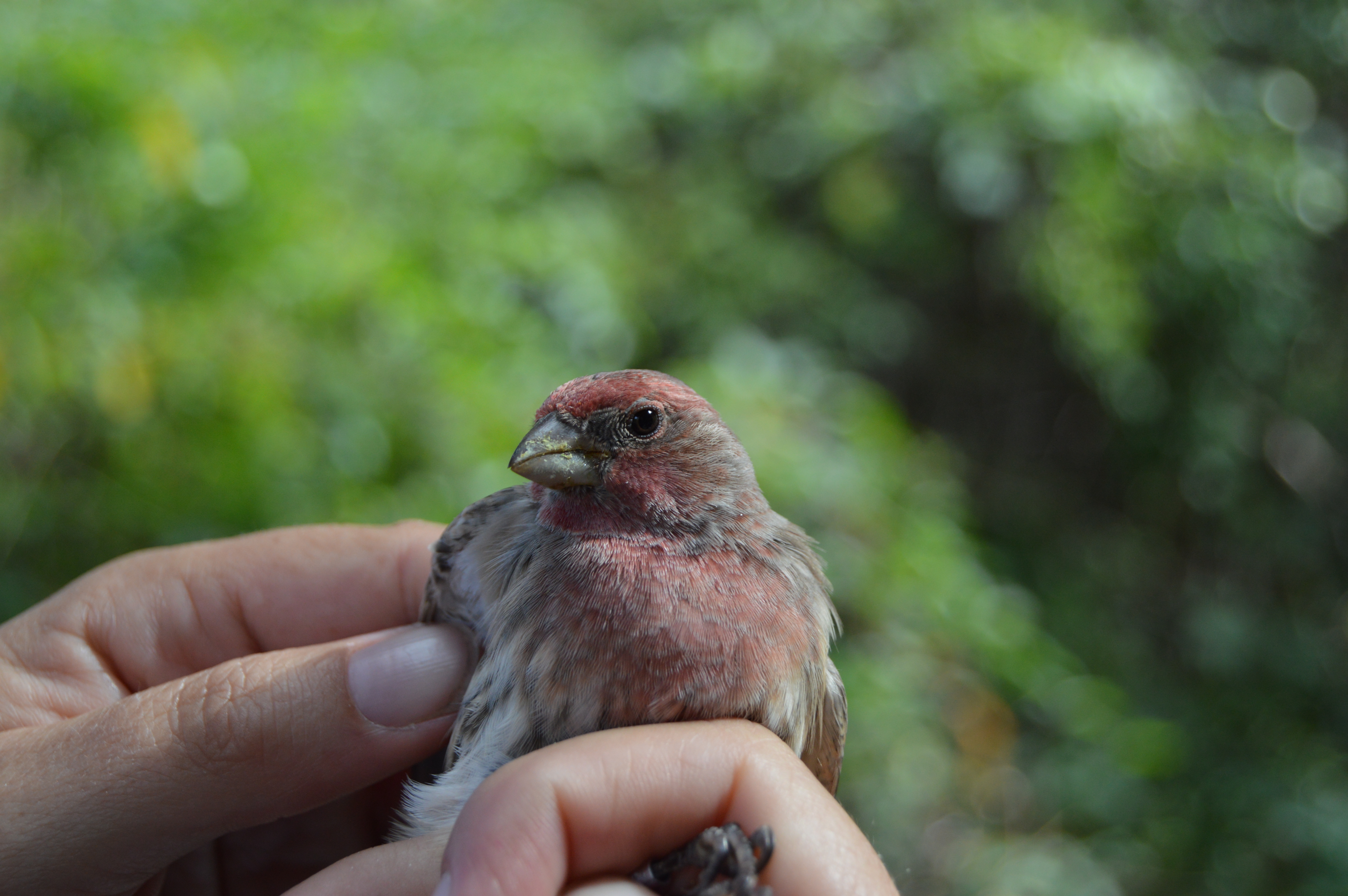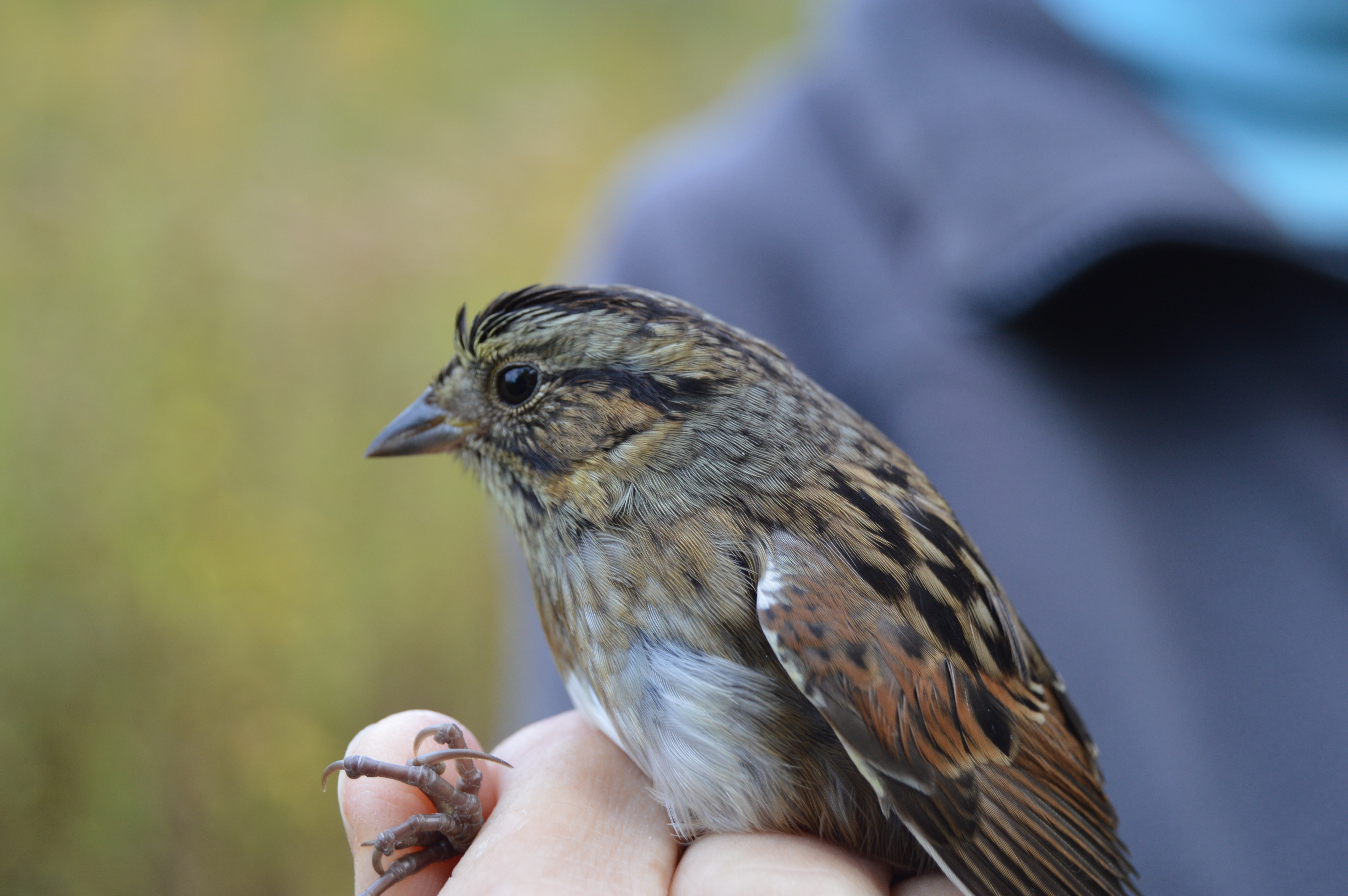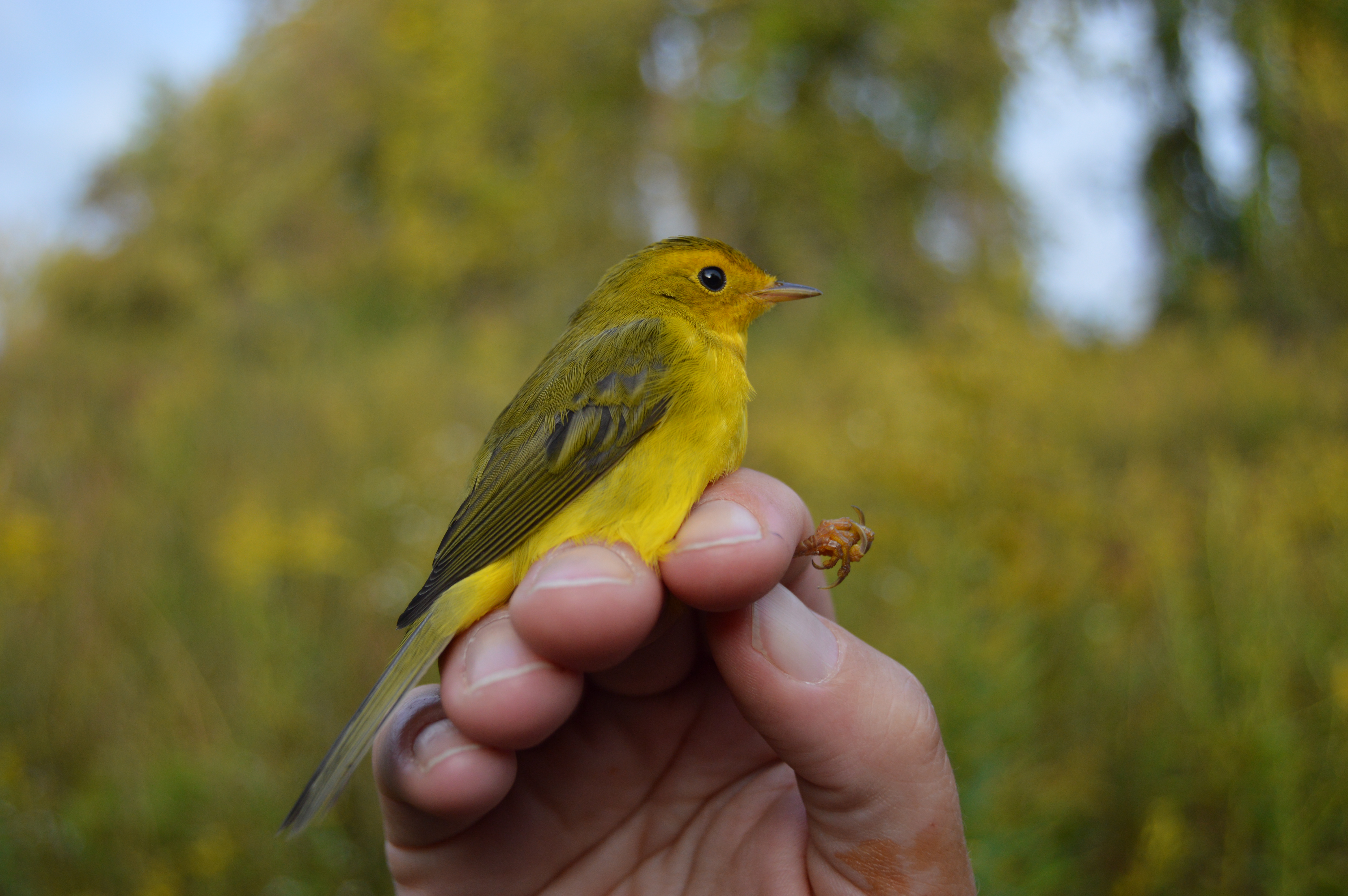
WAIT! If you’re a subscriber reading this in email format, before reading any further, please click on the title of the post right above in order to view the blog in the glory it was meant to have on the actual blog website.
________________________________________________________
It is a beautiful crisp October day, with the changing leaves standing out in stark contrast against the somber, gray sky. As I stand in the driveway of the picturesque office of Willistown Conservation Trust, I am enchanted by the feathered feeding frenzy! The trees are alive with rustling leaves that magically morph into bustling birds, flitting here and there to the rhythm of the Autumn spirit. Two Blackpoll Warblers wizz by my head in an animated chase, enlivened by the crisp air in this moment and forgetting about the many more miles they have to go before their winter sojourn in the tropics.
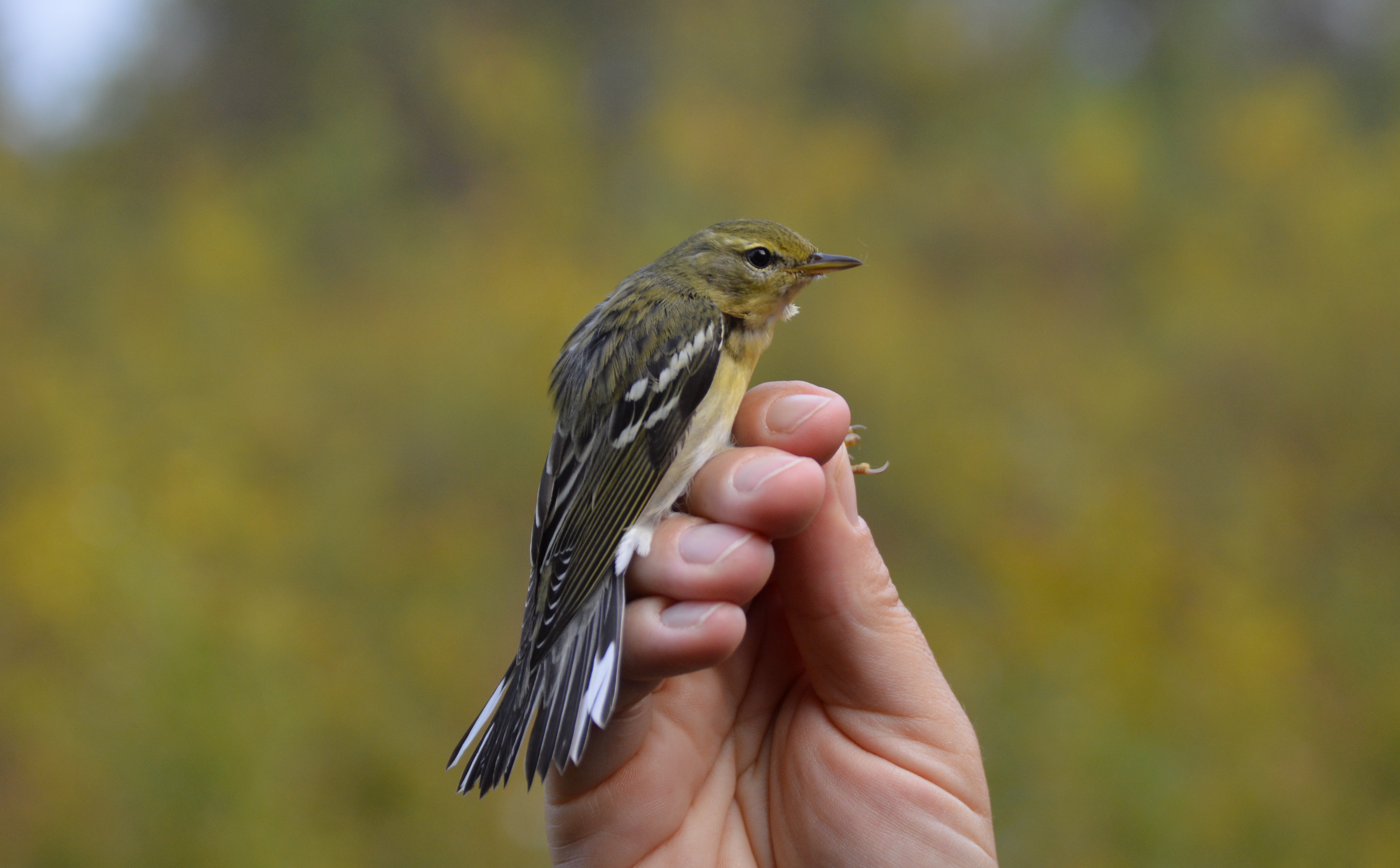
Many more warblers dance around in the upper reaches of the maple and hickory trees. The commotion of these strangers in the neighborhood stirs up the curious residents- the chickadees and titmice- who join the feeding flock. Perhaps the migrant flock found the resident chickadees and titmice first since these are the ones to trust when it comes to knowing where the best food sources are and where the predators are. Migrant flocks of birds are quite cunning like that. They must be. Their lives depend on it.
Tap. Tap. Tap tap-tap tap. Tap. My ears lead my eager eyes to a medium-sized woodpecker skirting its way up a dead tree trunk. The October shadows obscure the bird’s coloring from my view. Could it be a Yellow-bellied Sapsucker!? There have been many reports of these handsome migrants in the area!

Now my eyes are drawn to the Rudbeckia triloba (or Brown-eyed Susan) in the front bed of the office. Several flowers are nodding toward the earth and others bouncing up and down wildly under the weight of wild canaries! These are the resident goldfinches with their young of the year, voraciously harvesting the seeds of this wonderful native plant. I look up to my right where I see more movement in the willowy River birch from which a feeder hangs. More goldfinches are pecking at the birch catkins to extract nutritious seeds even as the bird feeder sways enticingly beneath them, filled with hulled sunflower seeds. You just can’t beat the opulent menu that nature offers for birds this time of year!

Looking out across the Trust’s native wildflower meadow, I see more old seed heads from the retired perennials bobbing up and down and small figures swooping around the golden grasses and diving in amongst the gray and amber stalks. I don’t grab my binoculars because I want to experience the whole of this pulse, rather than pick out the individual birds in this moment. I know there are mixed warblers, sparrows and more goldfinches out there in the meadow, and I am content to be wrapped up in the spirit of Autumn with child-like glee.
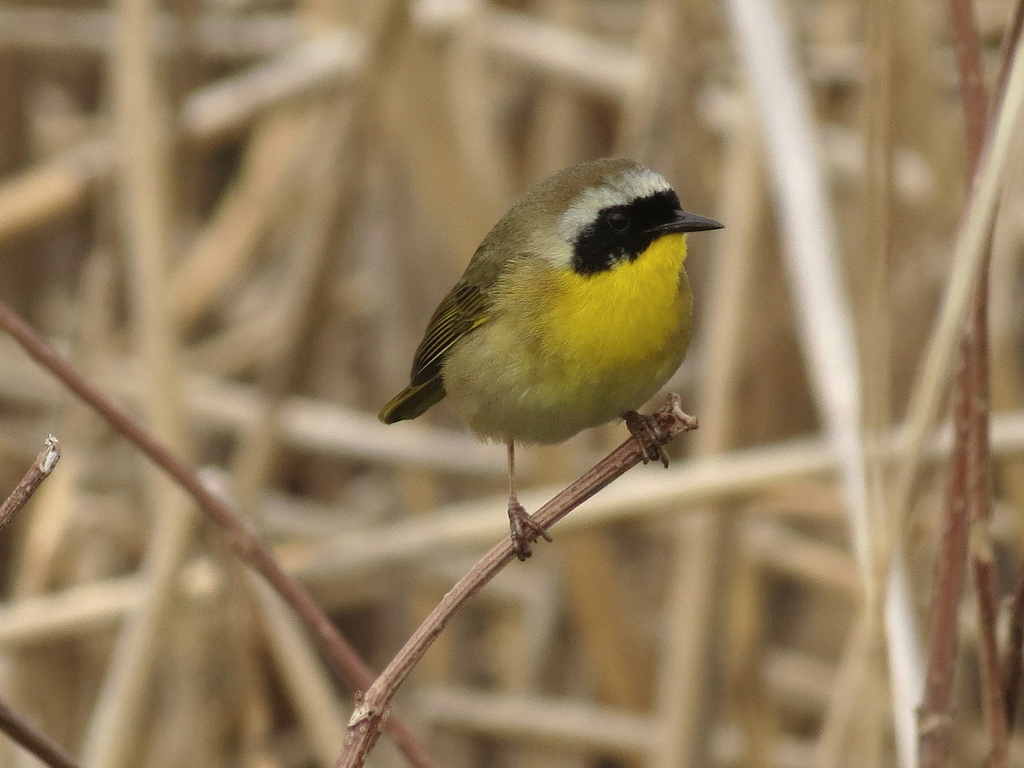
And I think to myself, what a wonderful landscape for these deserving creatures to relish. Our meadow will be mowed in early spring to keep the woody growth and invasive plants at bay, but for now its unmowed glory is a paradise providing shelter, seeds, insects and berries for countless small animals and birds. The insects themselves can find solace here; who knows how many praying mantis egg cases, underground bee burrows and silken cocoons are hidden safely amongst the leaf litter, ready to emerge in the new year and pass on their small but significant life force.

As I’m again enjoying the goldfinches feasting in the birch, a lovely Hermit Thrush silently enters the scene like an apparition and perches gracefully on a branch, gently and diagnostically bobbing its fox-red tail up and down to that same infectious pulse that seems to be rippling through this large flock of migrants – and now my heart.
This is the excitement that can come of a typical cloudy October day, when one simply tunes into the cycles of nature. Someone once told me,”never despise the day of ordinary things.” I say, when you invite birds and nature into your daily routine, the ordinary day becomes rare.

All of us banders at the Rushton banding station know this to be true. This fall season has been an exciting one with great species diversity (20 species one day!) and satisfactory numbers of migrants. The most we had in one day were 83 birds back in September when the Gray Catbirds were still going strong.
Now the catbird flow has tapered off, and the sparrows have entered the stage in full force including Lincoln’s, Swamp, Song, White-throated and even a Savannah! Field sparrows passed through earlier this fall.
The stream of warblers has also been slowing down, although last week we did catch a Magnolia Warbler, Black-and-white Warbler , Blackpoll Warbler and the usual Common Yellowthroats. This week’s warblers included Black-throated Blue, Magnolia, American Redstart and first of the season Yellow-rumped (Myrtle).
Wood thrushes have all passed through and have been replaced by Swainson’s Thrush, a few Gray-cheeked Thrush and tons of American Robins. We are expecting Hermit Thrushes, oodles of kinglets and loads more White-throated Sparrows to hop into our nets soon, followed by juncos and a Fox Sparrow or two to round out the season.
Noteworthy flyovers have included two regal Bald Eagles and a very mysterious Common Raven flying Southwest as it issued its guttural croaking call. Blue- headed Vireos serenaded us with their slow, playful song from the tops of the trees today. In the predawn, Bobolinks were heard over the farm on September 30th and an American Woodcock was heard one morning in mid-October. The Great Horned Owl sang to us many mornings during net setup.
People visitors, eager to see and learn about these migrating wonders, have been flocking to the banding station as usual. Visitors included the Birding Club of Delaware County, representatives from the Academy of Natural Sciences, businesses, Junior Birders, elementary school students and Universities like Villanova and UPenn. We even have a UPenn student analyzing stopover ecology data this season. This pertains to the timing and rate of weight gain in migrants during their stay at Rushton before continuing their migratory journeys. This type of data is revealed by same-season recaptures of birds.
Enjoy the following photo journal of the season highlights so far. Pretend you are birding! Hope to see you out there at Rushton (Tuesday and Thursday mornings through the end of October).
There’s a lot going on in the woods,
Blake





